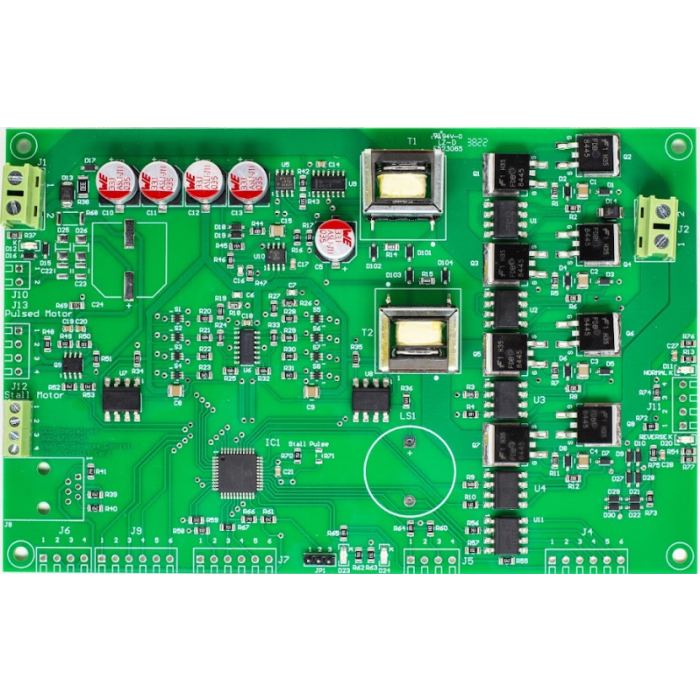 February 27 2024
February 27 2024 PSXX-AR Response CVs
The PSXX-AR & PSXX-ARSC have three CVs that control the response to a short in a reverse loop. They are CV58, CV59, and CV60. Before we discuss how to adjust these CVs, we need to understand how the PSXX-AR works.
- When a short occurs within the reverse loop (on the output of the PSXX-AR), as soon as the short is detected, the PSXX-AR turns off both DCC output lines.
- It selects the opposite polarity of the output from the polarity selected at the time of the short, and then it turns the output back on.
- It waits ashort period of time for things to settle, and then checks for a current in excess of the trip point.
- If the current is below the trip point, then the polarity reversal fixed the short and the output remains on.
- If the current is still above the trip point after the wait, then the reversal did not fix the problem and the PSXX-AR turns off both outputs.
- Once the outputs are turned off, the PSXX-AR will either wait for a pre-determined time before trying to turn on again (automatic reset) or wait for a command or manual indication (manual reset) to turn on.
- CV58-CV60 control the timing of this sequence.
CV58 controls the amount of time in milliseconds (0.001 seconds) that the PSXX-AR waits from the time it detects an over-current until the time that the output is turned off. Normally, you would want this to be as fast as possible, since you don’t want the DCC bus shorted for very long. Indeed, the default value of CV58 is 0. For almost all layouts, you want to leave CV58 aty 0. If you have a situation where two reverse sections [reverse loops and/or wyes] interact with each other, you can adjust CV58 so that one PSXX-AR waits long enough that the other PSXX-AR can reverse and relieve the short. The best design for your layout is to have a section of “normal” track between two reverse loops. This section should be long enough that your longest engine cannot touch both loops at the same time. Where this design is simply not possible, you may be able to get things working by adjusting CV58.
CV59 controls the amount of time in milliseconds that the PSXX-AR will wait before declaring a short.
The wait is from the time the reversed output is turned on until the PSXX-AR decides that the reversal of polarity did not solve the short problem and turns off. The default value of CV59 is 0 which results in a delay of 1ms. If you are having problems with the breaker portion of the PSXX-AR turning the output off when there is no apparent short, you may have some current spikes. You can tell the PSXX-AR to ignore these by adjusting CV59. Values of 10, 16, or 20 should be enough in this case.
CV60 controls the amount of time in milliseconds that the PSXX-AR will ignore a short (meaning no
reversal and no breaker trip) when the output is turned on from a previous off condition. Note this delay ONLY applies to the transition from track off to track on. This would occur when you power up your layout, when the PSXX-AR resets after detecting a short, or when the output is commanded on by a discrete input or DCC command. Under these conditions, storage capacitors (particularly on DCC
decoders) can look like a short until they have charged up to the track voltage. The delay from CV60 tells the PSXX-AR to ignore this over-current condition and wait for the current to drop below the trip point once the capacitors have charged. The default value of CV60 is 20, which should cover most layouts. Values of 30 or 40 should be more than enough.
